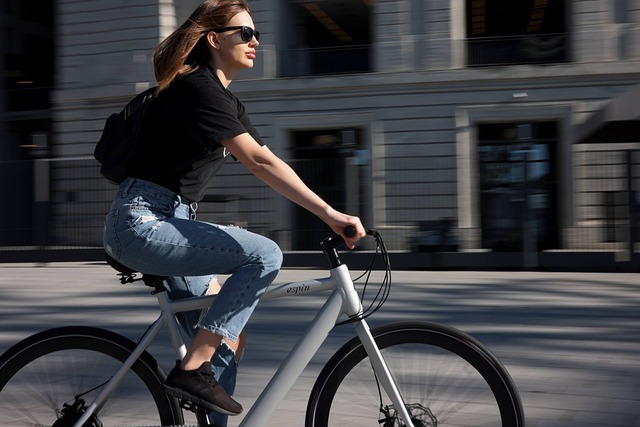In today’s world, adopting eco-friendly practices in our daily lives has become increasingly important. Not only does it help to preserve the environment for future generations, but it can also help us save money in the long run. From simple switches in our daily routines to more significant changes in our homes and workplaces, there are numerous ways to positively impact the environment while also cutting costs. This blog post will explore some easy and practical eco-friendly shifts you can make daily to live a more sustainable and cost-effective lifestyle.
Embracing the reuse and recycle philosophy in daily Eco-friendly Practices
Adopting the reuse and recycle philosophy is simpler than it seems. Start with small steps such as bringing your reusable bags to the grocery store, using refillable water bottles instead of buying disposable ones, and opting for reusable containers over plastic wrap for food storage. Repurposing items around your home can also significantly reduce waste; an old t-shirt can become a cleaning rag, and glass jars can serve as excellent storage solutions. Additionally, making recycling a routine practice by separating recyclables from your trash encourages responsible waste management. These habits contribute to a healthier planet and promote a minimalist lifestyle that can save you money.
Events Promoting Recycling and Reuse
- Earth Day (April 22):
-
- Description: A global event dedicated to environmental protection, often featuring recycling drives, educational workshops, and community clean-ups.
- Activities: Schools and communities organize recycling competitions, tree-planting activities, and workshops on sustainable living.
- National Recycling Day (November 15):
-
- Description: A day to promote recycling awareness and encourage people to recycle more.
- Activities: Local governments and organizations may host recycling events, provide information on recycling practices, and offer free recycling bins.
- Community Swap Meets:
-
- Description: Events where people can bring items they no longer need and swap them with others.
- Activities: Participants exchange clothes, books, toys, and household items, promoting reuse and reducing waste.
- Repair Cafés:
-
- Description: Community events where people bring broken items to be repaired rather than thrown away.
- Activities: Volunteers skilled in repairs help fix electronics, clothing, furniture, and other items, teaching repair skills in the process.
- Zero Waste Week (First week of September):
-
- Description: A campaign aimed at reducing waste and promoting sustainable living.
- Activities: Challenges to reduce household waste, workshops on upcycling and zero-waste living, and community events to share tips and experiences.
- Clothing Swap Parties:
-
- Description: Social gatherings where people bring clothes they no longer wear and exchange them with others.
- Activities: Participants can refresh their wardrobes without spending money, while also promoting the reuse of clothing.
Cutting down on single-use plastics without the hassle in your daily eco-friendly practices
Reducing your reliance on single-use plastics is easier than it might seem. Start by choosing products with minimal packaging or those packaged in recyclable materials. Invest in stainless steel straws and cutlery for on-the-go meals instead of relying on their plastic counterparts. For home parties or picnics, opt for compostable plates and utensils. Many coffee shops offer discounts for bringing your mug, and grocery stores often provide incentives for using cloth-produce bags. These small adjustments in your shopping and dining habits can significantly diminish your plastic footprint while saving you money over time.
Wax warmers over candles
Opting for scented wax warmers from ScentSationals instead of traditional candles is a savvy, eco-friendly choice. Wax warmers provide a flameless alternative, reducing the risk of fire and eliminating the smoke and soot associated with burning candles. This improves indoor air quality and ensures no harmful chemicals are released into your environment. Moreover, wax warmers use reusable wax melts, which minimizes waste compared to single-use candles. By incorporating ScentSationals wax warmers into your home, you’re making a safer, cleaner, and more sustainable choice that benefits your wallet and the planet.

Energy efficiency at home saves money and the planet
Upgrading your home to be more energy-efficient is a foolproof way to reduce your environmental footprint while lowering your utility bills. Start with simple changes, such as replacing traditional incandescent bulbs with LED lights, which use up to 80% less energy. Installing a programmable thermostat can help manage heating and cooling efficiently, avoiding energy waste. Consider larger investments like energy-efficient appliances or adding insulation to your home, which can offer significant savings and environmental benefits over time. Even sealing leaks around windows and doors can have an immediate impact on reducing energy consumption.
Innovations in energy efficiency for homes are continuously evolving, driven by advancements in technology and a growing focus on sustainability. Here are some of the latest innovations designed to enhance energy efficiency at home:
1. Smart Thermostats
- Description: Smart thermostats, like the Nest Thermostat or Ecobee, learn your schedule and preferences to optimize heating and cooling.
- Features: Remote control via smartphone, energy usage reports, integration with smart home systems.
- Benefits: Significant reduction in energy consumption for heating and cooling by adapting to your habits and adjusting temperatures automatically.
2. Solar Roof Tiles
- Description: Solar roof tiles, such as those from Tesla, integrate solar power generation directly into the roof design.
- Features: Durable and aesthetically pleasing tiles that generate electricity, often indistinguishable from conventional roofing.
- Benefits: Provides a renewable energy source while maintaining the appearance of a traditional roof, reducing reliance on grid electricity.
3. Home Energy Management Systems (HEMS)
- Description: HEMS are comprehensive systems that monitor, control, and optimize energy use in the home.
- Features: Real-time energy consumption monitoring, automated control of appliances, integration with renewable energy sources.
- Benefits: Enables homeowners to understand their energy use patterns, reduce wastage, and lower energy bills through automated management.
4. Heat Pump Water Heaters
- Description: Heat pump water heaters use electricity to move heat from the air or ground to heat water, rather than generating heat directly.
- Features: Highly efficient, often up to three times more efficient than traditional water heaters.
- Benefits: Lower energy consumption and costs for water heating, which is a significant portion of home energy use.
5. Energy-Efficient Windows
- Description: Advanced windows designed to minimize energy loss and maximize natural light.
- Features: Double or triple glazing, low-emissivity (Low-E) coatings, gas fills (argon or krypton) between panes.
- Benefits: Improved insulation, reduced heating and cooling costs, enhanced comfort by minimizing drafts and hot spots.
6. Smart Lighting Systems
- Description: Smart lighting systems, such as Philips Hue, allow for remote and automated control of home lighting.
- Features: Energy-efficient LED bulbs, programmable schedules, motion detection, and integration with smart home ecosystems.
- Benefits: Significant energy savings through automation, reduced wastage, and enhanced ambiance and convenience.
7. Insulation Innovations
- Description: New insulation materials and techniques to better regulate home temperature.
- Features: Spray foam insulation, reflective insulation, insulated concrete forms (ICFs).
- Benefits: Enhanced thermal resistance, lower heating and cooling costs, and improved indoor comfort.
8. Smart Power Strips
- Description: Power strips that can automatically cut power to devices that are in standby mode.
- Features: Surge protection, automatic shutoff for idle devices, remote control via app.
- Benefits: Reduces phantom loads (energy consumed by devices when not in use), leading to lower electricity bills.
9. Energy-Efficient Appliances
- Description: Appliances designed to consume less energy while providing the same level of performance.
- Features: Energy Star ratings, inverter technology in refrigerators and air conditioners, induction cooking technology.
- Benefits: Lower operational costs, reduced environmental impact, and sometimes tax incentives or rebates.
10. Greywater Recycling Systems
- Description: Systems that recycle water from sinks, showers, and washing machines for use in irrigation or toilet flushing.
- Features: Filtration and treatment systems to ensure water is safe for non-potable uses.
- Benefits: Reduces fresh water consumption, lowers water bills, and promotes sustainable water use practices.
11. Smart Home Integration
- Description: Comprehensive smart home systems that integrate various energy-saving devices and technologies.
- Features: Centralized control via a single app, compatibility with various smart devices (lights, thermostats, appliances).
- Benefits: Simplified management of home energy use, optimized performance of all connected devices, and enhanced convenience.
These innovations represent significant strides toward more energy-efficient homes, contributing to cost savings, reduced environmental impact, and improved living conditions.
Smart water use
Implementing water conservation strategies is a straightforward way to save money while safeguarding our planet’s most vital resource. Start by fixing leaks, a common yet often overlooked issue that wastes significant water and increases bills. Installing low-flow showerheads and dual-flush toilets dramatically decreases water usage in homes. Choose drought-resistant plants and employ rainwater harvesting techniques to minimize irrigation needs for landscaping. Simple actions like turning off the tap while brushing teeth or washing dishes can also contribute to substantial savings on water bills. Each of these steps conserves water and promotes a more sustainable lifestyle.

Sustainable transportation
Opting for sustainable transportation modes like biking, walking, or public transit significantly reduces your carbon footprint. Bike-sharing programs like Citi Bike in New York, dedicated bike lanes, and cycling infrastructure help achieve zero emissions, promote physical health, reduce traffic congestion, and are cost-effective. For those interested in a modern commuting option, an electric bike provides the convenience of assisted pedaling, making longer or more challenging commutes manageable and enjoyable. A battery-powered motorcycle can also be a cost-effective substitute for driving, saving on fuel and parking while allowing you to navigate traffic more efficiently. These transportation alternatives lessen air pollution and promote physical health through increased activity. Carpooling is another eco-friendly option, decreasing the number of vehicles on the road and thus reducing emissions and traffic congestion. Ride-sharing services like UberPool and Lyft Line also help reduce the number of vehicles on the road. Consider electric or hybrid vehicles for longer distances, which offer a greener alternative to traditional gasoline-powered cars. Some trending EVs include the Tesla Model 3, Nissan Leaf, and Chevrolet Bolt. Embracing these sustainable transportation methods can lead to a cleaner environment and a healthier lifestyle while potentially saving on transportation costs.
Supporting local and eco-friendly businesses
Supporting local and eco-friendly businesses has a multifaceted impact. It bolsters the local economy and reduces environmental footprints by minimizing transportation emissions associated with goods traveling long distances. Opt for products and services from local, green-certified businesses whenever possible. Many of these enterprises prioritize sustainable practices, such as using renewable energy sources, employing eco-friendly materials, and minimizing waste. By making conscious choices to support these businesses, you contribute to a sustainability culture that values the local community and the broader environment.
Growing your green thumb
Engaging in eco-friendly gardening and composting is a gratifying way to contribute to environmental sustainability while enriching your living space. By choosing native plants, you conserve water and support local wildlife. Implementing composting practices transforms kitchen scraps and yard waste into nutrient-rich soil, reducing landfill contributions and nourishing your garden naturally. These practices enhance the health and beauty of your garden and foster a deeper connection with the environment, embodying an eco-conscious lifestyle that benefits both the earth and your household.
Embracing eco-friendly habits is more than a trend; it’s a necessary shift towards creating a sustainable future. By integrating the simple yet impactful practices mentioned, you can play an important role in protecting our planet while enjoying cost savings. Remember, every small change contributes to a larger impact. Let’s commit to these eco-friendly shifts in our daily lives, fostering a healthier environment and a brighter future for future generations.





